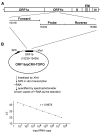Detection of SARS-associated coronavirus in throat wash and saliva in early diagnosis
- PMID: 15324540
- PMCID: PMC3323313
- DOI: 10.3201/eid1007.031113
Detection of SARS-associated coronavirus in throat wash and saliva in early diagnosis
Abstract
The severe acute respiratory syndrome-associated coronavirus (SARS-CoV) is thought to be transmitted primarily through dispersal of droplets, but little is known about the load of SARS-CoV in oral droplets. We examined oral specimens, including throat wash and saliva, and found large amounts of SARS-CoV RNA in both throat wash (9.58 x 10(2) to 5.93 x 10(6) copies/mL) and saliva (7.08 x 10(3) to 6.38 x 10(8) copies/mL) from all specimens of 17 consecutive probable SARS case-patients, supporting the possibility of transmission through oral droplets. Immunofluorescence study showed replication of SARS-CoV in the cells derived from throat wash, demonstrating the possibility of developing a convenient antigen detection assay. This finding, with the high detection rate a median of 4 days after disease onset and before the development of lung lesions in four patients, suggests that throat wash and saliva should be included in sample collection guidelines for SARS diagnosis.
Figures


Comment in
-
SARS-CoV sampling from 3 portals.Emerg Infect Dis. 2005 Jan;11(1):167. doi: 10.3201/eid1101.040645. Emerg Infect Dis. 2005. PMID: 15714659 Free PMC article. No abstract available.
References
-
- Centers for Disease Control and Prevention. Update: outbreak of severe acute respiratory syndrome—worldwide. MMWR Morb Mortal Wkly Rep. 2003;52:241–8. - PubMed
-
- World Health Organization. Summary of probable SARS cases with onset of illness from 1 November 2002 to 31 July 2004. [cited 2003 May 14]. Available from: http://www.who.int/csr/sars/country/2004_04_21/en/
Publication types
MeSH terms
Substances
LinkOut - more resources
Full Text Sources
Other Literature Sources
Medical
Miscellaneous
